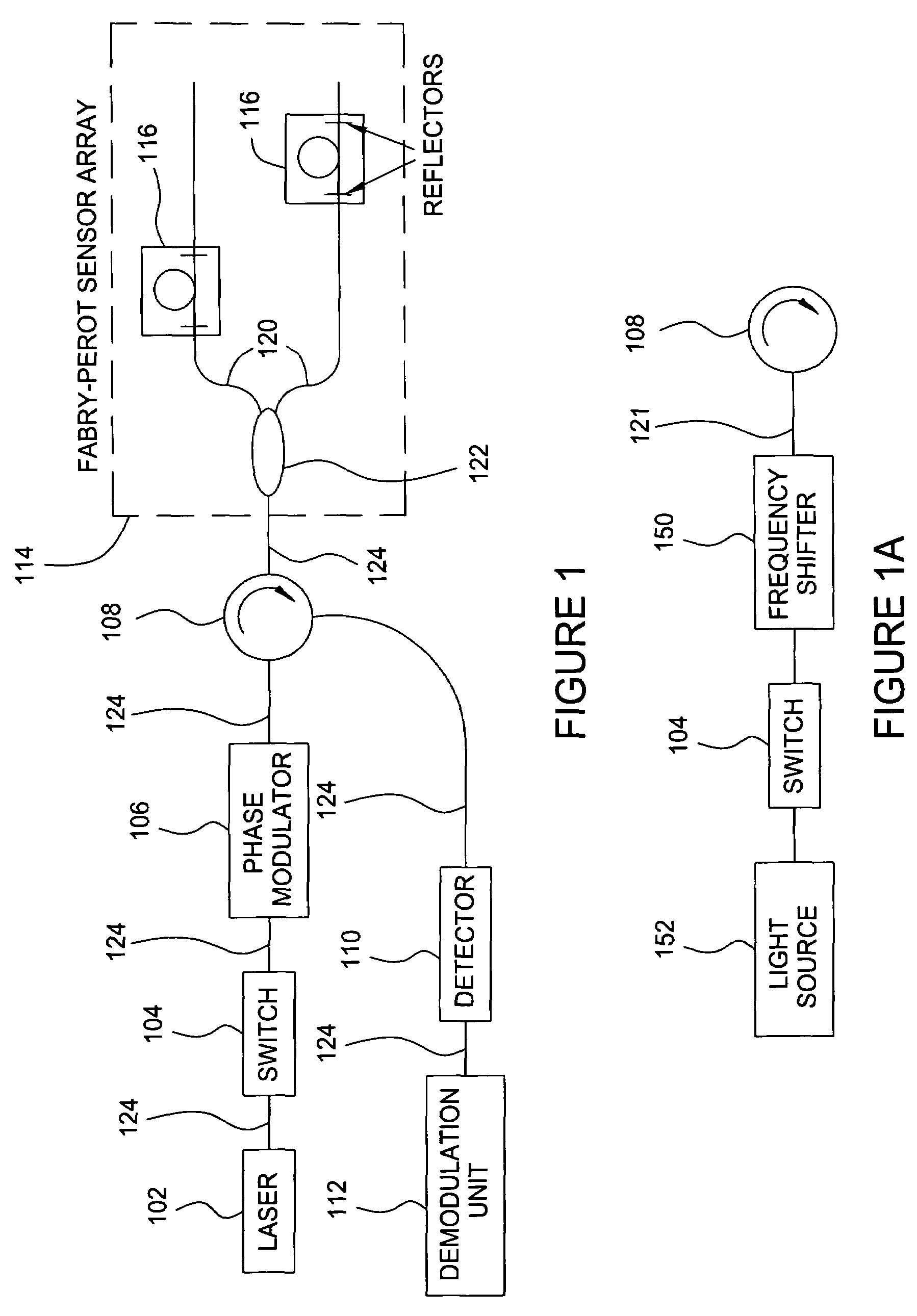Multi-pulse heterodyne sub-carrier interrogation of interferometric sensors
a multi-pulse heterodyne and interferometer technology, applied in the direction of converting sensor output, electromagnetic transmission, transmission, etc., can solve the imbalance of the time delay difference between the two paths of the sensor, the detection of interference signals, modulation frequency, etc., to improve the signal-to-noise ratio and increase the allowable interrogation pulse duty cycle
- Summary
- Abstract
- Description
- Claims
- Application Information
AI Technical Summary
Benefits of technology
Problems solved by technology
Method used
Image
Examples
Embodiment Construction
[0020]The present invention provides for interrogating time-multiplexed interferometric sensors using multiple interrogation pulses in a manner that avoids the necessity of allowing all multiple reflections from a Fabry-Perrot interferometer to fade out at the receiver before reflections of a new interrogation pulse or signal sequence arrives at the receiver. Because the principles of the present invention enable interrogating time-multiplexed interferometric sensors without requiring time delays to fade out reflections of the interrogation pulses from prior interrogations, the inventive principles can enhance the signal-to-noise ratio of sensor measurements. The principles of the present invention represent an enhancement of the two pulse heterodyne sub-carrier technique in a manner such that the phase difference between any two subsequent pulses within one repetition period always changes by the same amount from one repetition period to the next.
[0021]FIG. 1 illustrates a fiber-op...
PUM
| Property | Measurement | Unit |
|---|---|---|
| time- | aaaaa | aaaaa |
| optical frequencies | aaaaa | aaaaa |
| optical frequency | aaaaa | aaaaa |
Abstract
Description
Claims
Application Information
 Login to View More
Login to View More - R&D
- Intellectual Property
- Life Sciences
- Materials
- Tech Scout
- Unparalleled Data Quality
- Higher Quality Content
- 60% Fewer Hallucinations
Browse by: Latest US Patents, China's latest patents, Technical Efficacy Thesaurus, Application Domain, Technology Topic, Popular Technical Reports.
© 2025 PatSnap. All rights reserved.Legal|Privacy policy|Modern Slavery Act Transparency Statement|Sitemap|About US| Contact US: help@patsnap.com



